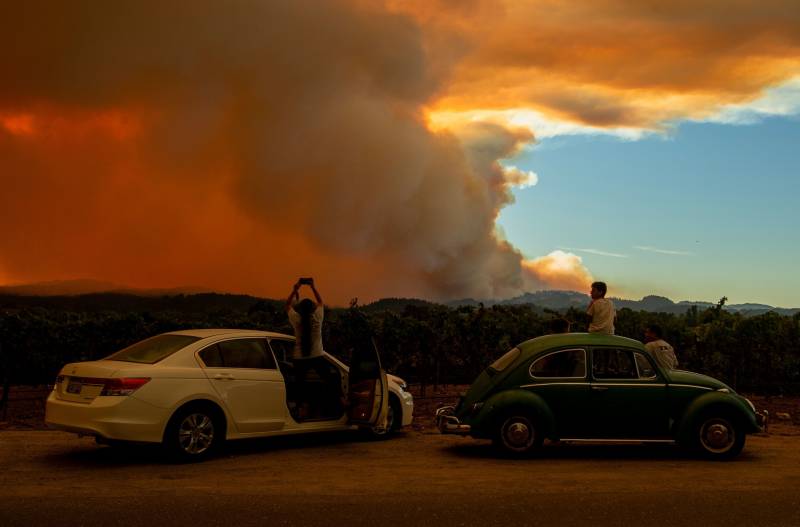Daniel Swain, a climate scientist with UCLA and a prolific chronicler of California’s increasingly wild weather, discussed the impact of climate change on wildfires on KQED’s Forum radio program on Tuesday. Swain and other scientists have conducted research suggesting climate change is a key driver of more frequent wildfires in the state.
Below are some key points Swain made on the show, edited for length and clarity.
What’s different about this series of fires?
Daniel Swain: It’s not the total acreage burned that’s so astonishing. It’s the fact that it occurred in about a two-week period and just in Northern California. That’s a relatively small region in a very short period of time over which to see that kind of wildfire extent, even in a part of the world that has experienced quite severe wildfire activity over the past five or six years.
What’s so surprising is how quickly the situation escalated. Often California sees its largest and fastest moving wildfires, especially in coastal areas, in the autumn, with offshore wind conditions — the Diablo winds in the Bay Area and the Santa Ana winds in Southern California. In this case, there were no such offshore winds to speak of.
What has the effect of climate change been on California wildfires?
My co-authors and I published a study recently focused on autumn fire risk in California and did indeed find that the number of extreme fire-weather days has already doubled due to climate change and is continuing to increase as warming continues.
My same colleagues were involved in another study that came to the conclusion that there has been a very steep increase in the number of wildfire acres burned in California over the past several decades. And one of the key reasons for that is indeed the way the climate has changed.
How has climate contributed to these bad fire seasons?
Climate change has increased fire risk by increasing vegetation aridity — what’s known as fuel moisture — over time; meaning vegetation becomes more flammable. Increasingly, dry vegetation burns more intensely, creates more intense and larger fires, which spread more quickly and are harder to fight.
What’s so striking this year is that we had sort of this classic sequence of events that you might expect to lead to a bad fire season. It started out with the dry winter in Northern California and then a particularly warm spring. July was actually pretty typical, which is to say, relatively mild and dry. But then we came to August and things changed very quickly. We had a very prolonged record heat wave and that big lightning event. [Lightning strikes ignited the recent series of fires in Northern California.] And then on top of that we have the legacy of climate change with this long-term dryness in the vegetation.
All the other factors that normally play into fire risk in California are still relevant. Obviously, we still worry about strong winds, especially those strong offshore winds in autumn. We worry about dry winters. We worry about dry autumns because that extends our fire season. But on top of all of this, what really seems to matter is that when you do get extreme fire weather conditions by some other means, whether it’s the dry lightning outbreak or a strong wind outbreak or a big heat wave, there’s antecedent drying of vegetation that sets the stage for those fires to become even more extreme than they would have been otherwise under the circumstances.

